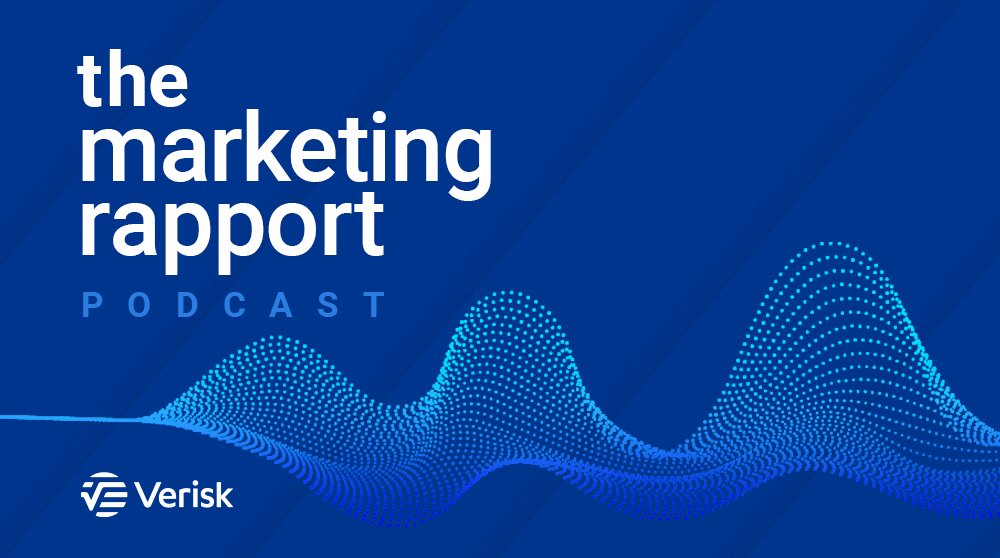An Independent Assessor’s Quest for Data Integrity
Data is the foundation of marketing in today’s consumer society, but how do you know that data your company is using is accurate?
We’ve all scrolled through our social media apps and seen the ads that make us wonder how our phones know us so well. How did they know we needed new tires before we did?
But we’ve also seen those rare ads that clearly aren’t meant for us. An ad in Spanish, perhaps, when we don’t speak Spanish, or an advertisement for a child’s toy when we don’t have children living with us. Those ads are a direct result of inaccurate data, and can cost companies thousands in wasted marketing spend.
Scott McKinely, founder and CEO of Truthset, believes the next significant shift in the data landscape is accuracy over scale, and he has set out to establish the industry standard for data accuracy.
The 1990s Data Explosion: The Push to Capture, Organize, and Analyze Data
When the digital revolution took off in the 1990s, it transformed the economy and marketing and how companies ran every aspect of their business. “There was so much data available about people and how they move around the internet, where they go, what they buy, who they might be,” McKinley says. “It was extremely powerful.”
As marketers realized they could target specific groups of people and companies realized they could direct their advertising dollars more predictably, they needed tools to manage and deploy data. “Billions of dollars went into building the systems to generate and capture and analyze, and predict based on record level data,” McKinley says.
Now those data systems are in place, and marketing analytics was a $193.14 billion business in 2019 and is expected to reach $420 billion by 2027.
The Privacy Problem
But in the early days of data, there was little attention paid to consumer privacy. People didn’t know their data was being collected or how it was being used, so stakeholders and governments drafted new guidelines to protect the consumer.
“The changes in the last five years led by GDPR [the General Data Protection Regulation] and regulation and self-policing has been really healthy” for the industry, McKinley believes, “We need to protect the consumer and consumer privacy.”
However, the collection of data isn’t going to go away, Scott notes, “There’s a value exchange between consumers and entities like ourselves or media properties where it was a gift to get, ‘Hey, I’ll give you this information, let you monetize it in return for accessing Facebook content or Twitter or whatever else.'”
The Next Big Data Shift
In 2019, McKinley established Truthset, a data intelligence company that evaluates the validity of data
Truthset looks at a data set and awards it a Truthscore between 0.00 and 1.00. They do this by validating gender, age, ethnicity, presence of children, and other data attributes so companies can make wise decisions regarding where to direct their advertising money.
“We produce a measurement of the accuracy of data,” McKinley claims. “We help data providers understand how accurate their data is and how they can improve that. We help buyers of that data discern quality across data providers and even down to the record levels, so they don’t pay for data that’s inaccurate.”
McKinley compares his work rating data accuracy to gasoline octane rating systems. You can use 92-octane, or you can use 87, but it won’t run the same in your car. The same is true of data; you can have a lot of it, but it won’t necessarily give you the same results as a smaller batch of data that’s more accurate.
“Our mission is to not only measure the quality and the accuracy of the world’s data not only to measure but to turn around and use it so that participants can get better and more precise [data] with a layer of privacy and compliance on top of that,” McKinley says.
Everyone Benefits from Accurate Data
“Anyone who is either producing, assembling, selling, exchanging, or otherwise using record-level data to do stuff can benefit by understanding which records are accurate and which ones are not,” Scott states.
So many companies may think data accuracy doesn’t matter, but it’s changing outcomes for businesses that use accuracy as another metric in their data acquisitions.
Now “we’re able to have an audience of a hundred people you’re going after, ‘Look, 60% [of that audience] are not what you think they are.’ If we can cut that in half, we improve efficiency by 30%. We’re in a world where marginal gains are all you get, so to improve efficiency by 20 or 30 or 40%, that’s huge.”
Clearly, companies benefit from more accurate data, but so does the consumer, who starts to see ads targeted specifically to them for products and services that they are likely to need.
“It’s better for the data providers. It’s better for the people who buy the data and use that data because the outcomes are better. It’s even better for the consumers in the marketing use case where they want more precise and relevant advertising.”
McKinley reports that Truthset is changing the game, and companies are starting to take note. “If [a company] is in an RFP situation, and there’s somebody there who doesn’t have a Truthset badge [for their data], who’s not been scored by Truthset, they’re not able to bid for the business.”
McKinley’s Work at Nielsen Helped Shape His View of Data Accuracy
McKinley got the idea for creating an independent measurement system for data accuracy from his work at Nielsen.
He learned “the value of independent measurement, the value of someone that sits between buyers and sellers and helps both sides understand the actual value of the asset being traded.”
Television studios and advertisers needed to see accurate audience numbers to determine where to direct their money and energy. Still, there wasn’t a standard for what constituted the audience, so nobody knew the size or makeup of audiences.
“When Nielsen stood up a measurement system for linear television, it cleaned up the market,” Scott says. “It removed a lot of friction between buyers and sellers and allowed everyone to agree on the value of the asset being traded, which in the case of Nielsen is the television audience.”
McKinley wondered, “If Nielsen figured out how to make $2 billion a year being the arbiter of truth for how big an audience is on linear television, why isn’t there someone being the arbiter of truth for the new fuel that runs the economy, which is data?”
Accuracy Beats Scale
Another critical lesson Scott learned from his time at Nielsen was the power of accuracy over scale.
Nielsen had just purchased a company, and they were running through the data when “the head of data science bragged he could deliver something like 8 million soccer moms in Kansas City. This is an impossibly large number. The census would tell you there’s probably maybe a hundred thousand moms in Kansas City, and there aren’t 8 million, and he said, ‘It doesn’t matter. I can mathematically back it up.’ This is a problem.”
The idea of accuracy is a new concept to some companies. “There are providers who think, ‘What’s the difference? You’ve got providers A, B, C, and D. It’s all pretty much the same. They must source.’ It’s not true at all.”
McKinley describes just how much variability can occur between data sets. “For Hispanic segments, I’ve seen data providers come up with literally 15% or 20% accuracy in a pool of ideas that they are swearing up and down and sideways are Hispanic, while others are 80% accurate. And that’s a huge difference when you talk about if you’re Tecate and you’re marketing to Hispanics. You don’t want to throw 70% of your money on the floor, delivering ads to people who are not Hispanic.”
A large company like McDonald’s, which is known worldwide, may not think they need to be concerned about accuracy. Instead, they might think the scale would be more important for their marketing needs.
But as data sets become more accurate, even McDonald’s can fine-tune their ads to specific groups. Busy moms on the go see ads about the nutritional values of their kids’ meals. Hungry teenagers see ads about their value meals or their late hours. It’s a wiser use of advertising dollars with a more significant return on investment.
Data with Integrity
McKinley credits his background as a professional road cyclist for his push for integrity in the data business. He raced professionally for ten years, including serving as the captain for the US Olympic road cycling team.
Scott quit racing professionally when doping started to become prevalent. “To me, [doping] is lying. That was bull. It kind of undermined the beauty of sports,” he said.
Now he’s trying to prevent the same kind of issues in data. “I’m trying to help everybody who uses data understand what’s real and what’s not, whether it’s inadvertent emphasis on scale versus accuracy or whether it’s outright bad players in the ecosystem.”
Note: This is based on an episode of Identity Revolution, Infutor’s podcast featuring data-driven experts discussing all things marketing, analytics, and identity. We take a deep dive into industry trends, strategies, and the future of data technology.









 Your Privacy Choices for Platform Services | Data Services
Your Privacy Choices for Platform Services | Data Services